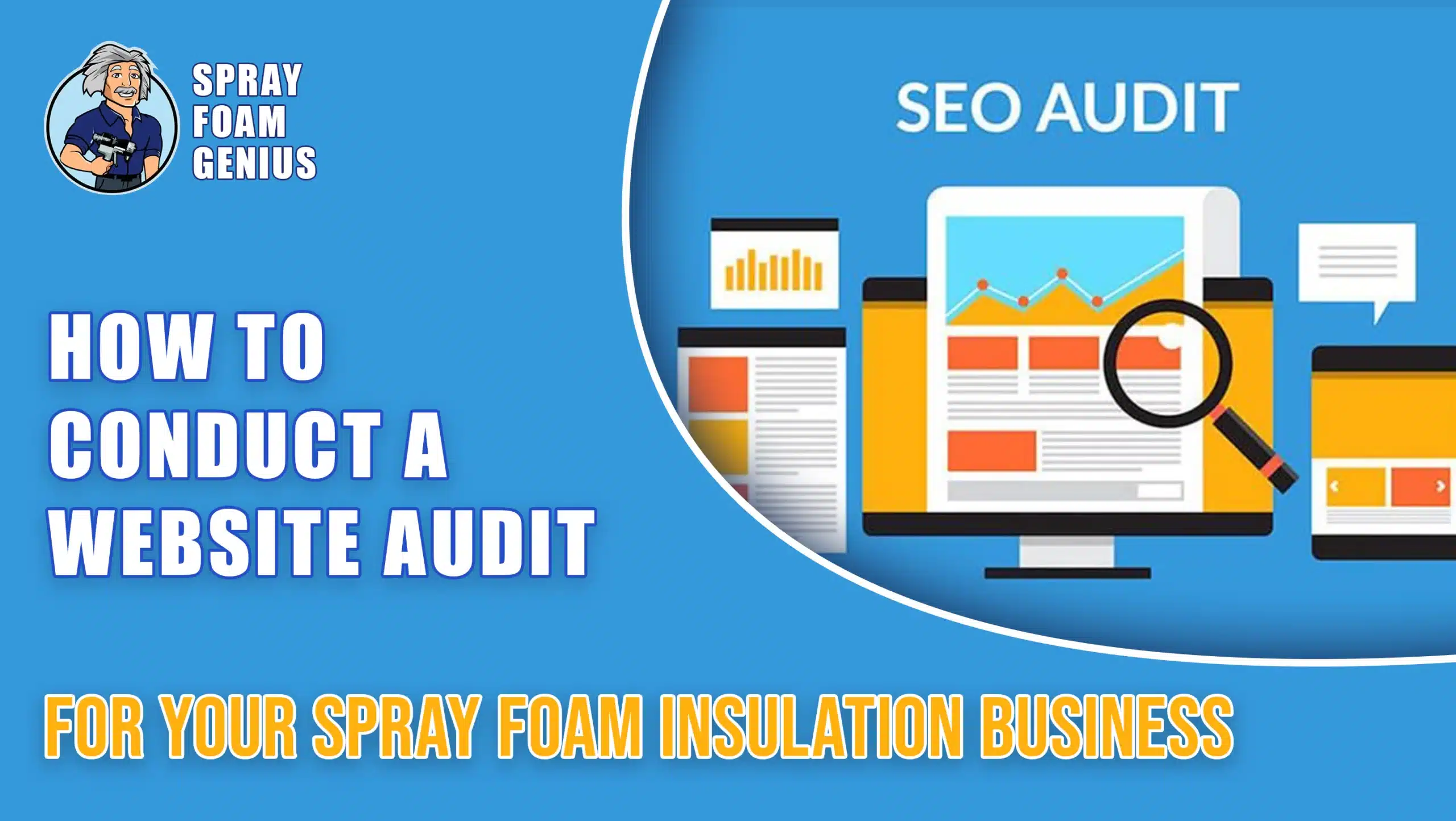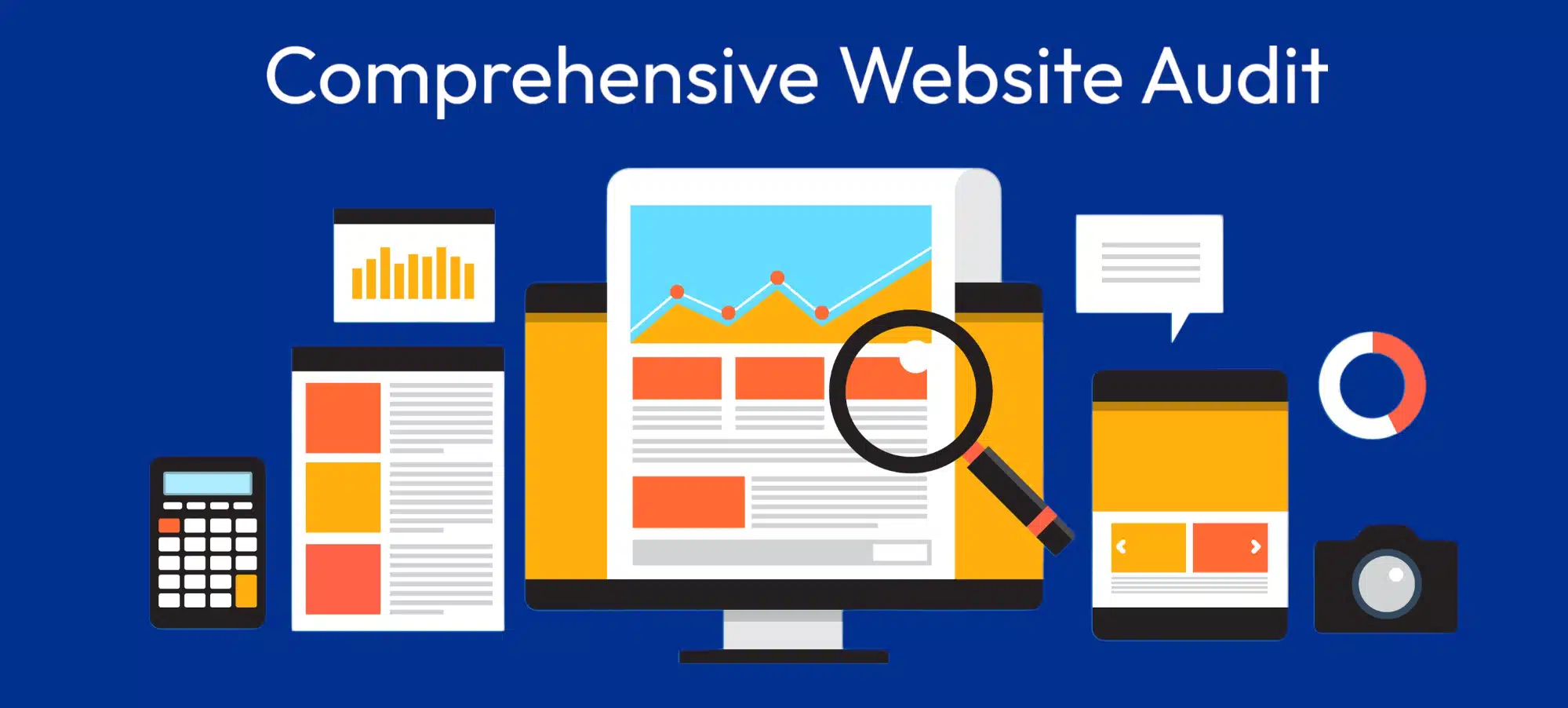
In the competitive field of spray foam insulation, having a well-optimized website is essential for attracting new customers and standing out from the competition. A website audit is a comprehensive evaluation of your site’s performance, aimed at identifying areas for improvement. At Spray Foam Genius Marketing, we specialize in SEO, Google My Business optimization, local SEO, website development, and lead generation for spray foam insulation businesses. This guide will walk you through the steps to conduct a thorough website audit to ensure your site is optimized for both search engines and user experience.
Understanding the Scope of a Website Audit
SEO Evaluation
SEO is critical for ensuring your website ranks well in search engine results and is visible to potential customers. An SEO evaluation includes:
On-Page SEO
On-page SEO involves optimizing individual pages to rank higher in search results. Key elements to review include:
- Meta Titles and Descriptions: Ensure each page has a unique meta title and description incorporating relevant keywords like “spray foam insulation” and “insulation contractors.”
- Headers: Use headers (H1, H2, H3) effectively to structure content and include target keywords.
- Content Optimization: Check that the content on each page is optimized for relevant keywords and provides valuable information.
Technical SEO
Technical SEO focuses on the backend aspects of your website that affect search engine indexing and user experience:
- Site Speed: Use tools like Google Page Speed Insights to assess and improve loading times. Aim for a loading time of under 3 seconds.
- Mobile-Friendliness: Ensure your site is responsive and functions well on mobile devices.
- Indexing Issues: Use Google Search Console to identify and resolve any crawl errors or indexing issues.
Off-Page SEO
Off-page SEO involves factors that impact your site’s authority and ranking:
- Backlink Profile: Analyze the quality and relevance of backlinks pointing to your site. Aim for high-quality, authoritative links.
- Toxic Links: Disavow any harmful links that could negatively affect your SEO.
User Experience (UX) Analysis
User experience directly impacts how visitors interact with your site and whether they convert into customers:
Navigation
Ensure that your website’s navigation is intuitive and user-friendly:
- Menu Structure: Your menu should be well-organized, making it easy for visitors to find information about your spray foam insulation services.
- Calls-to-Action (CTAs): CTAs should be clear and strategically placed to guide users toward taking desired actions, such as requesting a quote or contacting you.
Mobile Responsiveness
With increasing mobile traffic, your site must be responsive:
- Responsive Design: Test your website on various mobile devices to ensure it displays correctly and functions smoothly.
- User Experience on Mobile: Make sure that buttons and links are easy to tap, and text is readable without zooming.
Page Load Speed
A slow-loading site can frustrate users and lead to higher bounce rates:
- Performance Tools: Use Google Page Speed Insights or similar tools to measure and improve your site’s loading speed.
Content Quality Assessment
High-quality content is essential for engaging visitors and demonstrating your expertise:
Relevance
Ensure your content addresses the needs and interests of your target audience:
- Valuable Information: Provide detailed information about spray foam insulation services, including benefits, applications, and FAQs.
Clarity and Readability
Make your content easy to read and understand:
- Formatting: Use clear headings, bullet points, and short paragraphs to enhance readability.
- Language: Write in a straightforward, engaging manner that speaks directly to your audience.
Calls-to-Action (CTAs)
Effective CTAs drive user engagement and conversions:
- Visibility: CTAs should be prominent and compelling, encouraging visitors to take the next step, such as contacting you or requesting a quote.
Technical Functionality Check
Ensuring your site’s technical functionality is crucial for a smooth user experience and effective SEO:
Broken Links
Broken links can lead to a poor user experience and impact your SEO:
- Link Checking Tools: Use tools like Screaming Frog or Broken Link Checker to identify and fix any broken links on your site.
SSL Certificate
An SSL certificate is essential for site security and building trust with users:
- HTTPS: Verify that your website uses HTTPS and that your SSL certificate is up-to-date.
Sitemap and Robots.txt
Proper configuration of your sitemap and robots.txt file helps search engines crawl and index your site:
- Sitemap: Ensure your sitemap is submitted to Google Search Console and kept up-to-date.
- Robots.txt: Verify that your robots.txt file is correctly configured to guide search engine crawlers.
Steps to Conduct a Comprehensive Website Audit

1. Define Your Objectives
Before starting your audit, establish clear goals:
- Goals: Are you aiming to improve search rankings, enhance user experience, or increase conversions?
2. Gather Tools and Resources
Use a range of tools to perform a thorough audit:
- Google Analytics: Track website traffic, user behavior, and conversions.
- Google Search Console: Monitor search performance and indexing status.
- SEMrush or Ahrefs: Analyze SEO performance and backlink quality.
- PageSpeed Insights: Evaluate page load speed and performance.
3. Conduct a Site Overview
Review your website’s overall performance and structure:
- Site Structure: Ensure your site is well-organized with a clear hierarchy.
- Content Inventory: Assess the quality and relevance of existing content and identify opportunities for improvement.
4. Perform an SEO Analysis
Examine various aspects of SEO:
- Keyword Analysis: Review and update target keywords based on performance and current trends.
- On-Page SEO: Ensure meta titles, descriptions, headers, and content are optimized.
- Off-Page SEO: Analyze and improve your backlink profile.
5. Evaluate User Experience
Test your site’s usability:
- Site Navigation: Ensure all navigation elements are functional and user-friendly.
- Mobile Responsiveness: Verify that your site works well on different mobile devices.
- Page Speed: Improve loading times based on insights from performance tools.
6. Review Technical Functionality
Check the technical aspects of your site:
- Broken Links: Identify and fix any broken links.
- SSL Certificate: Confirm that your site uses HTTPS.
- Sitemap and Robots.txt: Ensure your sitemap is updated and your robots.txt file is properly configured.
Optimize and Enhance Your Website
After completing your audit, implement the necessary changes:
- Prioritize Issues: Focus on high-impact areas first.
- Make Improvements: Update content, enhance technical aspects, and refine user experience.
- Monitor and Review: Continuously review and adjust your site based on performance and feedback.
Stay Updated with SEO Trends
Keep up with the latest SEO trends and updates to maintain your site’s competitiveness:
- Industry News: Subscribe to SEO blogs and follow experts to stay informed.
Continuous Improvement
Website auditing is an ongoing process. Regularly schedule audits to keep your site in top shape and ensure it continues to meet your business goals.
Ready to Optimize Your Website?
If you’re ready to enhance your website’s performance and attract more leads for your spray foam insulation business, contact us today. At Spray Foam Genius Marketing, we specialize in SEO, website development, and lead generation for spray foam insulation contractors.
Call us at 877-840-FOAM for USA and 844-741-FOAM for Canada visit our website at sprayfoamgeniusmarketing.com, or email us at [email protected] to get started.
Let us help you achieve your business goals!
- 5 Google My Business Hacks to Double Your Leads for Spray Foam Insulation Contractors - January 14, 2025
- Why Spray Foam Contractors Cannot Ignore Reputation Management in 2025 - January 13, 2025
- Local SEO Secrets Every Spray Foam Contractor Must Know to Win in 2025 - January 13, 2025

